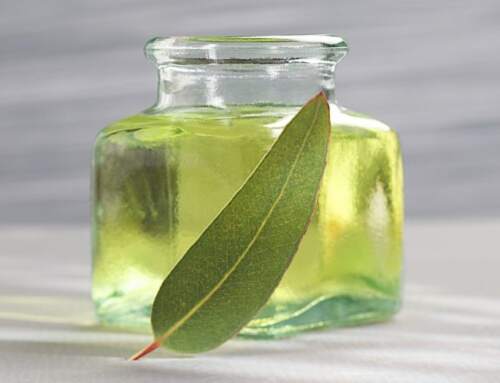At high altitudes, the human body can sometimes struggle to adapt. The air is thinner, which means there’s less oxygen to breathe. This can lead to altitude sickness, a medical condition that occurs when the body doesn’t get enough oxygen from the air at higher elevations. Commonly known as acute mountain sickness, its symptoms can range from mild headaches and dizziness to severe forms like pulmonary edema and cerebral edema. While many travelers resort to medications to combat the symptoms of altitude sickness, there’s a growing interest in natural remedies.
One such remedy that’s gaining traction is the use of essential oils. Derived from plants, these oils have been used for centuries to treat various ailments. But how effective are they against the challenges posed by high elevation? In this blog, we’ll delve deep into the world of essential oils and their potential in combating the symptoms of high altitude sickness. Whether you’re planning a trek to Machu Picchu, considering a summer vacation in high altitude locations, or simply curious about the natural remedies available, this guide is for you.

Understanding Altitude Sickness
Altitude sickness, often referred to as acute mountain sickness, is a medical condition that can occur when one ascends to higher altitudes too quickly. At these elevations, the barometric pressure decreases, leading to less oxygen available for the human body to intake. This lack of oxygen can disrupt the blood flow and blood pressure, causing a range of symptoms.
The symptoms of altitude sickness can vary in severity. Mild symptoms might include headaches, dizziness, fatigue, shortness of breath, and an upset stomach. However, if one continues to ascend without proper acclimatization, they might experience severe cases like poor coordination, pulmonary edema (fluid in the lungs) or cerebral edema (swelling of the brain). These severe forms of altitude sickness can be life-threatening and require immediate medical attention.
Several risk factors can increase the likelihood of developing altitude sickness. These include rapid ascent to high elevation, physical exertion without proper acclimatization, and certain underlying health conditions. It’s crucial to recognize the first signs of altitude sickness and take preventive measures to ensure safety.
The Power of Essential Oils
For centuries, essential oils have been celebrated for their therapeutic properties. Extracted from plants, these concentrated liquids have been used to address a myriad of health concerns, from boosting the immune system to improving blood circulation. Their common uses span across cultures and continents, making them a staple in many traditional medicine cabinets.
At the heart of their potency lies the ability of essential oils to interact with the nervous system and influence various physiological responses. For instance, peppermint oil is renowned for its cooling effect and ability to alleviate headaches, while eucalyptus oil is often used to clear respiratory passages. The essential oils of peppermint and eucalyptus, among others, have properties that can be particularly beneficial at high altitude destinations.
But how do essential oils work against the challenges of higher elevations? The answer lies in their unique compositions. Some oils can increase oxygen levels in the blood, while others can stimulate blood flow, ensuring that every part of the body receives adequate oxygen. This can be especially crucial when dealing with the lack of oxygen at high altitudes.
Moreover, essential oils offer a natural way to address the symptoms of altitude sickness. Instead of relying on medications that might have negative effects or contraindications, essential oils provide a holistic approach, working in harmony with the body’s natural rhythms.

Best Essential Oils for Altitude Sickness
- Peppermint Oil: Known for its invigorating scent and cooling properties, peppermint can alleviate headaches, boost blood circulation, and that queasy feeling, making it invaluable at higher elevations. [Peppermint Oil, $8.99]
- Eucalyptus Oil: A powerhouse for respiratory health, eucalyptus helps clear breathing passages [more ways eucalyptus is beneficial], ensuring optimal breathing at high altitudes where oxygen levels are lower. [Eucalyptus, $15.99]
- Tea Tree Oil: Beyond its skin benefits, tea tree oil supports the immune system with its antiseptic properties, preventing infections that might exacerbate altitude sickness symptoms. [Tea Tree, $8.49]
- Thyme Oil: This oil stimulates blood flow and improves blood pressure, assisting those adjusting to sudden altitude changes. [Thyme, $11.99]
- Clary Sage: Clary sage oil, with its soothing properties, can aid in diminishing anxiety and fostering relaxation. Additionally, it can offer relief from headaches and various symptoms linked to altitude sickness. [Clary Sage, $9.89]
- Lavender Oil: Renowned for its calming properties, lavender can help reduce anxiety and stress, common symptoms experienced by those not acclimated to high altitudes. [Lavender, $8.99]
- Rosemary Oil: This oil can enhance memory and concentration, which can sometimes be affected at high elevations. It also promotes blood circulation. [Rosemary, $7.99]
- Ginger Oil: Effective against nausea and digestive issues, ginger oil can be a boon for those suffering from an upset stomach due to altitude changes. [Ginger, $12.59]
- Frankincense Oil: With its anti-inflammatory properties, frankincense can help reduce swelling and pain, especially headaches associated with altitude sickness. [Frankincense, $9.99]
- Chamomile Oil: Known for its soothing effects, chamomile can help with sleep disturbances, a common issue at higher altitudes. [Chamomile, $8.73]
Remember, when using these oils, it’s crucial to dilute them with a carrier oil like olive oil or coconut oil before direct application. This ensures safety for topical use and minimizes skin irritations.
How to Use Essential Oils for Altitude Sickness
Harnessing the benefits of essential oils requires knowledge of their proper application. Here’s a guide on how to effectively use these oils to combat the challenges of higher elevations:
- Inhalation: One of the best ways to experience the therapeutic properties of essential oils is through inhalation.
- Direct Inhalation: Simply open the bottle and take a few deep breaths. This method is especially useful for immediate relief from symptoms like nausea or headaches.
- Diffusers: Add a few drops of your chosen essential oil to a diffuser. This method not only provides relief but also creates a calming environment. [Diffuser, $16.49]
- Topical Application: For issues like poor blood circulation or muscle aches, direct application can be beneficial.
- Always dilute the essential oil with a carrier oil (e.g., olive oil, vegetable oil) before applying to the skin to prevent irritation.
- Massage the diluted oil onto the affected area for relief. For headaches, apply to the temples and back of the neck.
- Aromatherapy Blend: Create a blend of multiple oils for a synergistic effect. For instance, combining peppermint oil and eucalyptus oil can be effective for both headaches and respiratory issues.
- Safety Precautions:
- Always conduct a patch test before using any oil extensively to check for allergic reactions.
- Essential oils are potent; use them in small doses.
- Keep oils out of the reach of children and avoid using them on pregnant women unless deemed safe.
- If symptoms of altitude sickness persist or worsen, seek immediate medical attention.
- Storage: Store essential oils in a cool, dark place, preferably in an amber or blue bottle to protect them from light, which can degrade their quality.

Alternative Cures for Altitude Sickness
While essential oils offer a natural approach to combating altitude sickness, they are just one of many alternative remedies that people have turned to over the years. As travelers and adventurers seek holistic ways to acclimate to higher elevations, a variety of traditional and alternative methods have gained popularity. Here are some noteworthy alternative cures for altitude sickness:
- Coca Leaves: Indigenous to the Andes Mountains in South America, coca leaves have been chewed or brewed into tea by locals for centuries. They are believed to help improve oxygenation and alleviate symptoms like fatigue and shortness of breath.
- Ginkgo Biloba: This herbal supplement is often recommended as a preventive measure against altitude sickness. Some studies suggest that it can help improve blood flow and oxygenation, though results are mixed.
- Dietary Adjustments: Increasing dietary fiber intake and consuming foods rich in potassium, such as bananas and dark leafy greens, can help the body acclimate to high altitudes. Staying hydrated and reducing salt intake can also be beneficial.
- Herbal Tea: Apart from coca tea, other herbal teas like ginger and chamomile can help soothe the stomach and reduce nausea associated with altitude sickness.
- Acupressure and Acupuncture: These traditional Chinese medicine techniques are believed to help balance the body’s energy and improve oxygenation, potentially reducing altitude sickness symptoms.
- Hydration: Drinking enough water is crucial at high altitudes. Proper water intake helps the body adjust to the decreased oxygen levels and can alleviate some of the milder symptoms of altitude sickness.
- Breathing Exercises: Practicing deep breathing exercises can help increase oxygen intake and improve circulation, aiding in acclimatization.
- Gradual Ascent: One of the best preventive measures is to ascend gradually, allowing the body to acclimate to the changing altitudes. Spending a few days at a moderate altitude before moving higher can make a significant difference.
- Avoiding Alcohol and Sedatives: Both can depress the respiratory drive and exacerbate the symptoms of altitude sickness.
- Antioxidants: Some believe that taking antioxidant supplements, like Vitamin C, can help combat the oxidative stress that occurs at high altitudes, though more research is needed in this area.
It’s essential to note that while these alternative cures can be beneficial, they are not a substitute for proper acclimatization and medical interventions when needed. Always consult with a healthcare professional before trying any new remedy, especially when traveling to high altitude regions.
Conclusion
Navigating the challenges of high altitudes can be daunting. The thin air, reduced barometric pressure, and the myriad of symptoms associated with altitude sickness can turn an exciting adventure into a taxing ordeal. However, as we’ve explored in this guide, nature offers a potent arsenal in the form of essential oils. From the invigorating peppermint oil to the calming effects of lavender, these natural extracts provide a holistic approach to combating the symptoms of high altitude sickness.
While medications and other preventive measures have their place, the use of essential oils offers a complementary approach, working in tandem with the body’s natural mechanisms. Whether you’re an Olympic athlete training in high altitude regions, a traveler exploring the majestic peaks of Machu Picchu, or someone simply looking for natural remedies, essential oils can be a valuable addition to your toolkit.
As with all remedies, it’s always a good idea to consult with professionals, especially if symptoms persist. But with proper knowledge, application, and respect for these potent oils, the sky (or the high mountain peak) is truly the limit.






